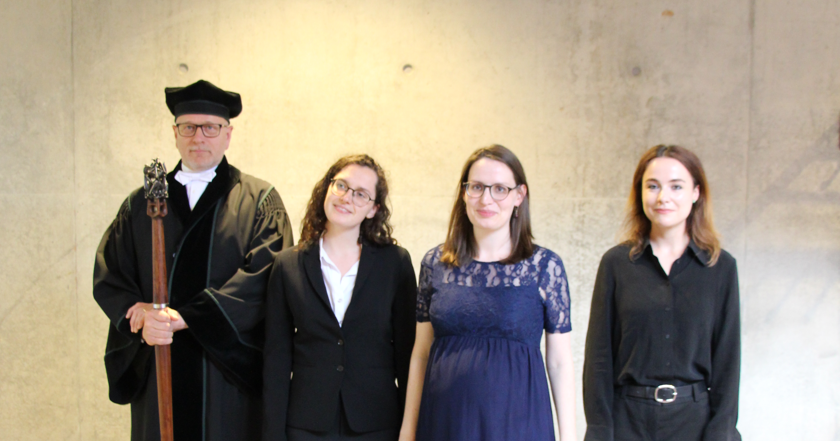Una Kelly is a PhD candidate in the Department of Data Management & Biometrics. Promotors are prof.dr.ir. R.N.J. Veldhuis and dr.ir. L.J. Spreeuwers from the Faculty of Electrical Engineering, Mathematics and Computer Science.

Face recognition plays an important role in modern society. We depend on it when we travel through airports that use automated border control systems (eGates), unlock our phones with it, and police use it to find criminals in their databases. While its role in public surveillance is currently hotly debated, it is in some cases already being used. Understanding the algorithms used and their potential weaknesses is therefore very relevant.
A face recognition system verifies the identity of an individual by comparing two facial images and deciding whether or not they match, i.e. belong to the same person. Two images of different persons - person A and person B - can be mixed to create a morph. Face recognition systems often accept such a morph as a match with images of A, but also with images of B, leading to potential security issues. For example, if someone were to apply for an ID document using a morphed passport photo this could enable two people to travel using the same ID.
Our approach to the problem of morphing attacks is to analyse the effect of morphing in the feature spaces of face recognition systems in order to better understand why they are vulnerable to morphing attacks. Our aim is to develop methods that not only decrease vulnerability to known types of morphing attacks, but also to unknown attacks.
First, we introduce worst-case morphs, which allow us to understand the theoretical vulnerability of face recognition systems. Exploiting information from embedding spaces of face recognition systems on the one hand allowed us to approximate worst-case morphs and on the other hand inspired an approach for face de-identification.
Second, one reason face recognition systems are vulnerable to morphing attacks is because they were not trained with morphed images and were simply not developed to deal with images that contain identity information from more than one person. In fact, the better a system is at distinguishing normal facial images from one another, the more vulnerable it is to morphing attacks. We explain why this trade-off happens and suggest improvements to reduce vulnerability to morphing attacks.





